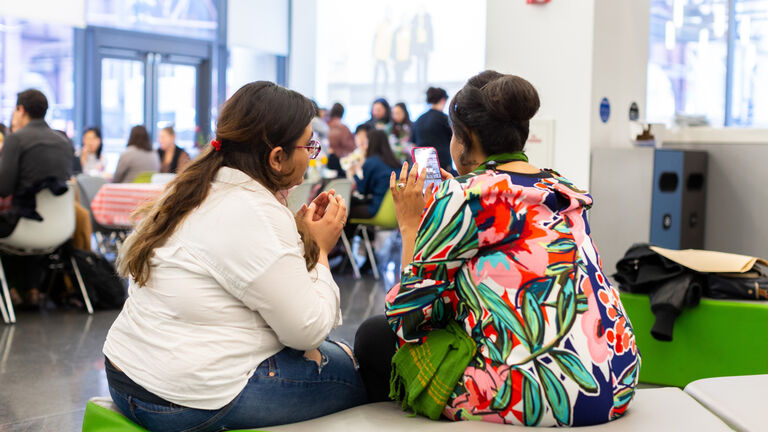
Highlights from the Center for Teaching and Learning's First Year
The School of the Art Institute of Chicago’s Center for Teaching and Learning (CTL) officially opened at the end of August 2023. I am incredibly grateful for the generosity that so many of you showed last academic year. Thank you for your time, attention, and enthusiasm.
In its inaugural year, the CTL addressed two key areas. First, we collaborated with faculty, community stakeholders, the CTL advisory board, and members of the Dean’s staff to craft a mission, community guidelines, and values. These statements will guide the CTL into the future. Readers can find them on the CTL website. Second, we designed, implemented, and assessed a wide variety of educational development programs and resources. To do so, the CTL met with faculty members in all academic and studio departments. I owe a debt of gratitude to SAIC’s department heads, who enthusiastically welcomed me and facilitated these important discussions
Of the programs that we offered last year, a few stand out to us. Our “Teach and Tell” model provided faculty with an opportunity to present on an issue related to their artistic practice, pedagogy, or research. Topics ranged from trauma informed pedagogy to managing risk in the studio. Through this initiative, we also invited distinguished speakers from the Maryland Institute College of Art and Queen Mary University of London. Nearly 100 SAIC faculty participated in CTL Teach and Tell workshops, which we will continue next year. To learn more about how you can be involved, please visit the CTL Teach and Tell sign up form.
The CTL Learning Lab program also proved successful. A multidisciplinary collaborative composed of SAIC faculty, the Learning Lab provided its fellows with an opportunity to respond to the theme, “ecstatic pedagogy.” Inspired by bell hook’s Teaching to Transgress, “ecstatic pedagogy” motivated faculty to develop research-based projects that center joy and promote new ways to understand student and faculty success. At the same time, “ecstatic pedagogy” reflects the pleasure that hooks attributes to engaged pedagogy as a form of political activism. In total, we awarded six stipends to SAIC faculty to participate in this initiative
If it was not obvious, the CTL’s educational development programs prioritized SAIC’s part-time faculty. We did this intentionally and we will continue to design and refine educational opportunities that award part-time faculty for their teaching, research, and artistic practice. If you are a non-tenure track faculty member, please visit the CTL to discuss how we can better support you.
I believe that we are beginning to refine what the Center for Teaching and Learning might, and perhaps should, be at SAIC. As the CTL director, I look forward to serving as an advocate for faculty, whose aspirations, commitments, and priorities clarify our mission and work. On this note, we invite you to join the CTL Mentors program, which we hope to enhance next year through a number of new collaborations and opportunities.
